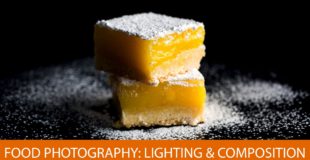If you have aspirations to be a better food photographer on any level join New York Times photographer Andrew Scrivani for this instructional talk.
Andrew Scrivani NY Times Food Blog: http://makingsundaysauce.com
Personal Work:
http://www.andrewscrivani.com
Instagram: andrewscrivani
Original source

37 responses to “Food Photography: Lighting and Compositional Basics”
Great! Thank you so much 🙂 Good light. 🙂
I have learned so much in just this one video. For all the ones saying " i see flaws in the photo" lets see your work? this guy is a boss at what he does!
A very useful and informative video
This was a really informative and useful video, thank you!
Hi, Just wondering how many image shots do you take before you are certain and happy with the final result?
This guy seems not to understand that food photography isn't about artsy light, it's about making food look appetizing. People don't want to eat what they can't see. Most of these photos are lost in black holes. Some are so dark they're unidentifiable. As others point out, none of these images would be used in a menu, magazine editorial or cookbook. Since when do people serve lemon bars in a dark room with one side of them going to black? Steam off of what is apparently a steak, except you can't see the steak. A jar of what could be honey, beer, ice tea, who knows? The blobs in the background give no context. And I didn't think it was possible to make a row of colored ice cream cones look depressing, but he manages to do it.
If you want to see outstanding commercial food photography that isn't artsy fartsy then study a Denny's menu carefully, because they get it. I'm not joking. It may not look like it was photographed on a moonlit Tuscan balcony, but it makes the food look approachable and yummy.
The best video ever on good photography. great work and thanks from the bottom of my heart.
wow, your images are amazing and your talk was so down to earth, so relateable. Fantastic, thank you so much.
Quite the story, Andrew! I like that you explained the beauty of the images through the use of colors and light and cherished personal experiences that everyone's had – all without boasting about your own skill. You kept it humble, and that's what made it so easy to watch and absorb. I'm a food photog down in Miami, and am currently working on using shadows. I only shoot at restaurants and bars at night because of my day job, and that's forced me to learn how to use one, two and three flash unit setups. I have yet to use daylight or a studio, or a full-frame camera yet, so I'm excited for my future in this industry. Anyways, this was one of the first videos I watched on food photography, and now that I've revisited it months later, it's got so much more meaning to me. Thanks for sharing your insight, and thank you to B&H for producing and supporting this.
Anthony Nader
52 Chefs
@52Chefs on Instagram
im not super passionate about food, but each picture shown made me wanna eat something.. so, yup, it works!
What a pleasure it was to listen to a guy who knows what he's talking about and to look at his wonderful work. Thank you Mr. Scrivani!
Spit it out ya turkey neck, get to the content.
andrew is my No1. Food Photographer! <3
nice shoot
Loved it. Thanks!
What a valuable lesson in storytelling and tabletop shooting. Thank you Andrew, and B&H!
This is the best video I've watched on food photography so far. Thanks!
I thought the shot of his lighting set up was the best, most informative part. Thanks for this.
That was so helpful! Thank you!
Very informative, thanks for sharing…
So interesting and inspiring, thank you so much!! Where can I find the onion peel photo, it's beautiful! Thanks in advance 🙂
Best ever food photography talk I have watched till now. Dude you made my day. I will be applying these techniques for my next client.
Baiham Graley Photography & Cookbook Competition | Sultry Desserts
https://www.youtube.com/watch?v=1YT8lZoCHV0&feature=youtu.be
Thank you for a great video! Especially around the 25-29th minute….very inspirative, motivational words 🙂
excellent, thanks for sharing
What are the settings he said he is really happy when achieve it?
Photo after photo, explaining light and dark and story, and no information on how he actually shot it.
As Andrew Scrivani mentions at the beginning of his talk, “food photography is an art form that gravitates towards the macro.” So, if you don’t already have a macro lens for your camera, it would be a good lens to invest in. For the Nikon D7200, you might look at the Nikon AF-S Micro-NIKKOR 60mm f/2.8G ED Lens. It’s an excellent lens, which would allow for lovely detail shots of food. At the same time, it isn’t overly telephoto, so you could still get shots of full plates/tables and procedural shots. Christina AskYouTube@bhphoto.com
The lightning, the view angle and the depth of field of the pictures shown do not comply with the requirements of cook book publishers.
what kind of lens do you suggest for a Nikon. I'm using the D7200
this was really inspirational, thank you!
This was great. I thoroughly enjoyed it.
Thank you for the awesome video. Love the explanation, as it can be overwhelming for a beginner in photograpy to understand the method and techniques. 🙂
very help,, thank you
I'm not a photography expert, but I did pick up on a lot of technical flaws with the sample images.
Interesting lecture nonetheless !
Just starting out a new wine/food blog in California. This was REALLY helpful.
This does not talk about lighting as the title suggests.